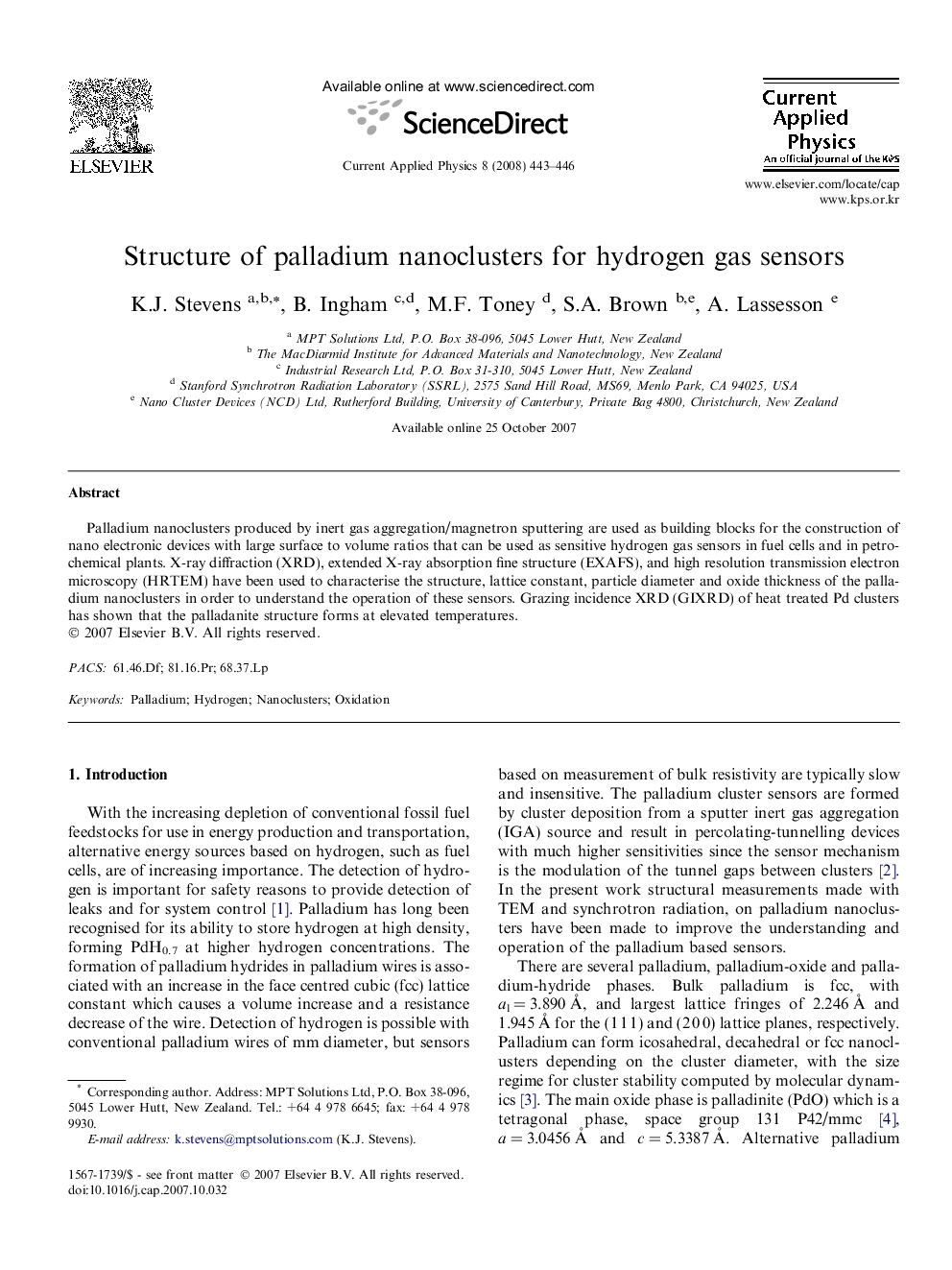| Article ID | Journal | Published Year | Pages | File Type |
|---|---|---|---|---|
| 1788514 | Current Applied Physics | 2008 | 4 Pages |
Abstract
Palladium nanoclusters produced by inert gas aggregation/magnetron sputtering are used as building blocks for the construction of nano electronic devices with large surface to volume ratios that can be used as sensitive hydrogen gas sensors in fuel cells and in petrochemical plants. X-ray diffraction (XRD), extended X-ray absorption fine structure (EXAFS), and high resolution transmission electron microscopy (HRTEM) have been used to characterise the structure, lattice constant, particle diameter and oxide thickness of the palladium nanoclusters in order to understand the operation of these sensors. Grazing incidence XRD (GIXRD) of heat treated Pd clusters has shown that the palladanite structure forms at elevated temperatures.
Related Topics
Physical Sciences and Engineering
Physics and Astronomy
Condensed Matter Physics
Authors
K.J. Stevens, B. Ingham, M.F. Toney, S.A. Brown, A. Lassesson,
